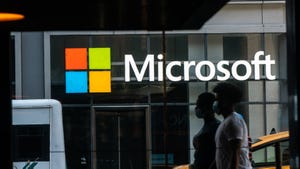Data Centers Achieve LEED Certification
Highmark's data center in eastern Pennsylvania is one of the few Tier III facilities to attain LEED status as a "green" facility.
April 9, 2007
Building a data center to meet strict standards for LEED-certified "green" buildings is possible, but will cost more and require a lot of planning and documentation, according to one company which has taken the plunge.
Health insurance provider Highmark's data center in eastern Pennsylvania is one of the only stand-alone data centers in the country that has LEED silver status and also has been certified as a Tier III facility by the Uptime Institute, according to Mark Wood, the director of infrastructure management at Highmark. The Leadership in Energy and Environmental Design (LEED) program is administered by the U.S. Green Buildings Council, and is the national benchmark for the design and construction, and operation of high performance green buildings.
Highmark's data center in West Hanover, Pa. is an 87,000 square foot facility on an 11-acre site, which includes office space and 28,000 square feet of raised-floor technical space. The data center, which officially opened in November of 2005, serves as the hub of a network that connects over 100 hospitals and 15,000 healthcare practitioners, processing 500,000 claims per day.
Having an office component makes it much easier to achieve LEED status. One of the other prominent LEED-certified data centers, the FNMA Technology Center in Urbana, Md., is also a mixed-use facility with both office and data center components.
"LEED is written around office space and not data centers," said Wood. "It would have been much more difficult (without the office component). With energy the way it is, it can save you some money over the long run. But it does cost more to do a LEED building. It increased the cost of this project by 3 to 4 percent."
Highmark hired Holder Construction, CS Technology and Baltimore architects RTKL for the project, which cost approximately $40 million. Any company interested in a LEED certification must commit early in the process, according to Wood. "If you going to do it, do it from the beginning," he said. "You need to build a library of documentation to submit for LEED certification. We were always measuring to the Leeds points in dollars. We were balancing budget and points the whole time."
The LEED program awards points for environmental design in five areas: sustainable site development, water savings, energy efficiency, materials selection, and indoor environmental quality. Wood said some of the additional expense for a LEED certification is in "soft costs," including increased in fees from contractors. But the need to use additional recycled materials added to the project cost. "The key here was to try and buy the materials as close as possible to the project to reduce travel costs," said Wood.
The LEED process also governed decisions regarding fire protection. "We don't use any CFCs in our HVAC or cooling systems," Wood said, which rules out FM-200 and a number of other suppression agents.
Wood said that Highmark's green data center not only makes an environmental statement but is a marketing tool for the company. The facility has a tour aisle, so visitors can get a complete view of the innovations to meet the LEED standard.
Becoming LEED-compliant wasn't easy, but Wood believes it was worth it. "If your window is very short, it may be hard to participate in this program," he said. "But we think we're going to get value from it over the long term."
About the Author
You May Also Like


.jpg?width=300&auto=webp&quality=80&disable=upscale)




